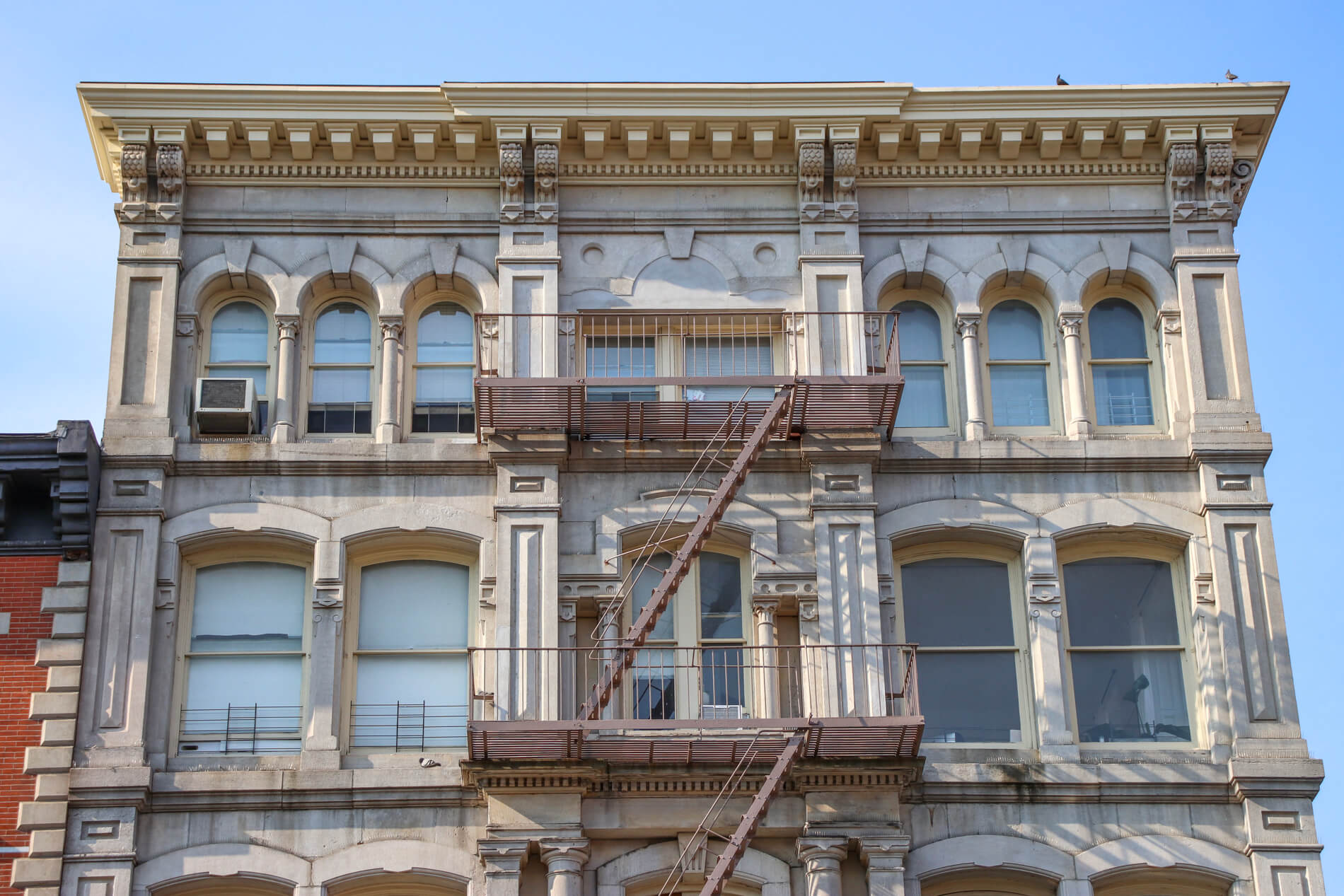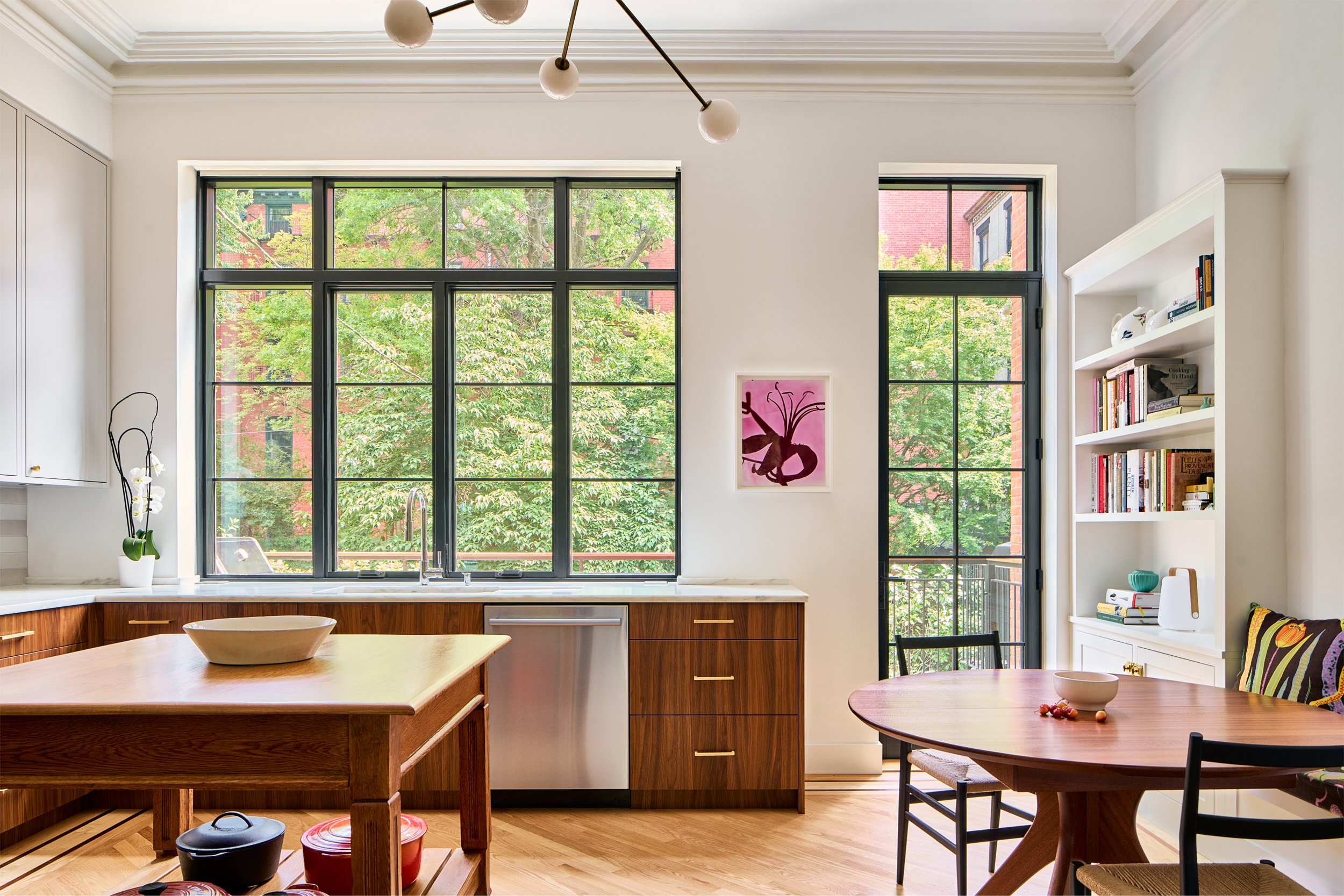Keeping the Money in Brooklyn: The South Brooklyn Savings Institution
By the mid to late 1800s, Atlantic Avenue was a busy shopping district, with shops and storehouses that could supply your ship for an Atlantic Ocean voyage, put food on your plate, or sell you the most current fashions.

Editor’s note: This is an update of a post that originally ran in 2012. See the original here.
By the mid to late 1800s, Atlantic Avenue, especially on the blocks close to the waterfront, was a busy shopping district, with shops and storehouses that could supply your ship for an Atlantic Ocean voyage, put food on your plate, or sell you the most current fashions.
With all of that commerce going on, it was inevitable that there would be at least one bank in the area, and for many years, it was the South Brooklyn Savings Institution. This venerable savings bank was founded in 1850, and had its first headquarters and offices further down the street, at 136 Atlantic Street, before Atlantic even became an Avenue.

The bank was quite successful, so that by 1853 they were looking for larger space, and for a while decamped to the Brooklyn Athenaeum, a large reading room/auditorium/performance space that stood on the opposite corner of Atlantic and Clinton, where Key Food is now. According to the daily ads placed in the Brooklyn Daily Eagle, their hours at the time were limited, only two hours a day 5-7 pm, on Monday, Wednesday and Saturday. Wednesday was ladies only.
A successful savings bank in the 1800’s depended on the deposits of thousands, but they were all started by the large depositors who put their money and influence into the bank. South Brooklyn had the usual cadre of Brooklyn’s wealthy merchants and financiers, most of them with homes and/or businesses in the immediate area. The board of South Brooklyn included merchant James Van Nostrand, who lived on nearby Henry Street, and James Stranahan, whose shipping business had led him into politics and Brooklyn’s development. He is called the “Father of Prospect Park” for his work in making that project happen.

By the late 1860s, plans were in play for a large new bank, resplendent in its own building. The trustees hired Ebenezer Roberts to design this new facility at 160 Atlantic Avenue. Roberts, although forgotten today, was quite busy in the mid-19th century, designing homes and churches for Charles Pratt in Clinton Hill, churches and offices, including the Standard Oil headquarters, in Manhattan, (thank you Charles Pratt, again), and the Phoenix Insurance Building, also in Brooklyn.
The South Brooklyn Savings Institution was quite splendid inside and out. The façade is Tuckahoe marble, and the bank interior was once clad in marble and black walnut woodwork. The vault was of constructed of granite blocks mortised out to receive cannon balls between each pair of blocks, so that any serious attempt to move them out of alignment would bring the walls down. The building was described at the time as a “landmark in the leading retail section of Brooklyn.”

As the years went by, this building, too, became too small, and business was moving out of the Atlantic Avenue area. In 1922, a much larger, new and beautiful Renaissance Revival bank was designed for the South Brooklyn Savings Bank, on the corner of Atlantic and Court. That building is now home to Trader Joe’s.
This building became a series of retail establishments, and the banking interiors were removed. Over the years, the building was significantly altered, with apartments created on the upper floors, a fire escape installed in the front, and the ground floor altered beyond recognition. The elaborate balustrade that once topped the building is long gone. It’s still quite beautiful, in spite of all that’s been done to it, with fine lines, great ornamentation and a very large and impressive cornice. Most people would be surprised to learn that this was once a grand and ornate bank.

[Photos by Susan De Vries unless noted otherwise]
Related Stories
- A Prominent Cobble Hill Greek Revival Gets a Bit of Extra Zing
- An Unpretentious 19th Century Building Holds Its Corner in Cobble Hill
- R. G. Dun & Company and the Business of Information in Gowanus
Email tips@brownstoner.com with further comments, questions or tips. Follow Brownstoner on Twitter and Instagram, and like us on Facebook.





What's Your Take? Leave a Comment